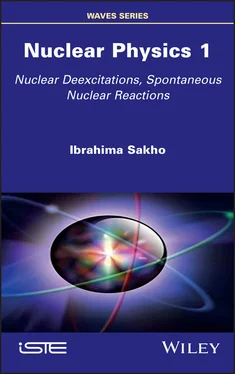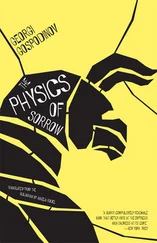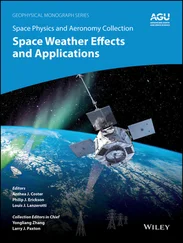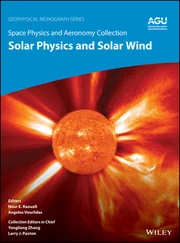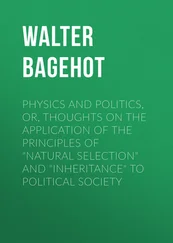1 Cover
2 Title Page
3 Copyright First published 2021 in Great Britain and the United States by ISTE Ltd and John Wiley & Sons, Inc. Apart from any fair dealing for the purposes of research or private study, or criticism or review, as permitted under the Copyright, Designs and Patents Act 1988, this publication may only be reproduced, stored or transmitted, in any form or by any means, with the prior permission in writing of the publishers, or in the case of reprographic reproduction in accordance with the terms and licenses issued by the CLA. Enquiries concerning reproduction outside these terms should be sent to the publishers at the undermentioned address: ISTE Ltd 27-37 St George’s Road London SW19 4EU UK www.iste.co.uk John Wiley & Sons, Inc. 111 River Street Hoboken, NJ 07030 USA www.wiley.com © ISTE Ltd 2021 The rights of Ibrahima Sakho to be identified as the author of this work have been asserted by him in accordance with the Copyright, Designs and Patents Act 1988. Library of Congress Control Number: 2021945496 British Library Cataloguing-in-Publication Data A CIP record for this book is available from the British Library ISBN 978-1-78630-641-8
4 Preface
5 1 Overview of the Nucleus
1.1. Discovery of the electron
1.2. The birth of the nucleus
1.3. Composition of the nucleus
1.4. Nucleus dimensions
1.5. Nomenclature of nuclides
1.6. Nucleus stability
1.7. Exercises
1.8. Solutions to exercises
6 2 Nuclear Deexcitations
2.1. Nuclear shell model
2.2. Angular momentum and parity
2.3. Gamma deexcitation
2.4. Internal conversion
2.5. Deexcitation by nucleon emission
2.6. Bethe–Weizsäcker semi-empirical mass formula
2.7. Mass parabola equation for odd A
2.8. Nuclear potential barrier
2.9. Exercises
2.10. Solutions to exercises
7 3 Alpha Radioactivity
3.1. Experimental facts
3.2. Radioactive decay
3.3. αradioactivity
3.4. Exercises
3.5. Solutions to exercises
8 4 Beta Radioactivity, Radioactive Family Tree
4.1. Beta radioactivity
4.2. Radioactive family trees
4.3. Radionuclide production by nuclear bombardment
4.4. Natural radioactive series
4.5. Exercises
4.6. Solutions to exercises
9 Appendices
10 Appendix 1 Quantified Energy of the Three-Dimensional Quantum Harmonic Oscillator
A1.1. Integration of the Schrödinger equation
A1.2. Use of creation and annihilation operators
11 Appendix 2 Atomic Masses of Several Nuclides
12 References
13 Index
14 End User License Agreement
1 Cover
2 Table of Contents
3 Title Page
4 Copyright First published 2021 in Great Britain and the United States by ISTE Ltd and John Wiley & Sons, Inc. Apart from any fair dealing for the purposes of research or private study, or criticism or review, as permitted under the Copyright, Designs and Patents Act 1988, this publication may only be reproduced, stored or transmitted, in any form or by any means, with the prior permission in writing of the publishers, or in the case of reprographic reproduction in accordance with the terms and licenses issued by the CLA. Enquiries concerning reproduction outside these terms should be sent to the publishers at the undermentioned address: ISTE Ltd 27-37 St George’s Road London SW19 4EU UK www.iste.co.uk John Wiley & Sons, Inc. 111 River Street Hoboken, NJ 07030 USA www.wiley.com © ISTE Ltd 2021 The rights of Ibrahima Sakho to be identified as the author of this work have been asserted by him in accordance with the Copyright, Designs and Patents Act 1988. Library of Congress Control Number: 2021945496 British Library Cataloguing-in-Publication Data A CIP record for this book is available from the British Library ISBN 978-1-78630-641-8
5 Preface
6 Begin Reading
7 Appendices
8 Appendix 1 Quantified Energy of the Three-Dimensional Quantum Harmonic Oscillator
9 Appendix 2 Atomic Masses of Several Nuclides
10 References
11 Index
12 End User License Agreement
1 Chapter 1 Figure 1.1. Crookes tube Figure 1.2. Crookes tube wall fluorescence Figure 1.3. Perrin’s simplified experimental set-up Figure 1.4. Simplified set-up for measuring the electron mass-to-charge ratio: (... Figure 1.5a. Millikan’s simplified experimental device Figure 1.5b. Uniform drop motion of a droplet of charge q, mass m and radius r. ... Figure 1.6. Planetary model of the atom, envisioned by Perrin in 1901 Figure 1.7. Model of the atom envisioned by Thomson Figure 1.8. Simplified experimental device by Geiger and Marsden Figure 1.9. Rutherford scattering experiment set-up Figure 1.10. Planetary atomic model envisaged by Rutherford Figure 1.11. Scattering of a beam of α particles of an angle, θ , in the solid ang... Figure 1.12. Frontal collision between an α particle and an immobile nucleus of ... Figure 1.13. Comparisons of theoretical predictions according to the Rutherford ... Figure 1.14. Rutherford’s simplified experimental device for conducting the firs... Figure 1.15. Chadwick’s experimental set-up Figure 1.16. Internal proton and neutron structures according to the Gell-Mann a... Figure 1.17. Variation of the nuclear charge distribution density ρ (r); the nuc...Figure 1.18. Segrè diagram, the nuclear energy surface indicated in red, groupin...Figure 1.19. Energy El necessary to separate, to infinity, the nucleons of a nuc...Figure 1.20. Aston curve Figure 1.21. Comparison of the stability of the nuclei of uranium-238, strontium...Figure 1.22. Simplified Thomson device for identifying the canal rays discovered...Figure 1.23. Simplified diagram of a mass spectrograph Figure 1.24. Uranium isotope trajectories in a magnetic deflector Figure 1.25. Portion of the trajectory of a particle of charge q in motion in a ...Figure 1.26. Circular trajectories of isotope ions in the magnetic deflector
2 Chapter 2Figure 2.1. Profile of a harmonic potential well of depth V0 Figure 2.2. Nucleon distribution according to the shell model for helium-4 and l...Figure 2.3. Nucleon distribution according to the shell model for the neon-18 nu...Figure 2.4. Shape of the Woods–Saxon potential Figure 2.5. Shape of the Woods–Saxon potential for nuclei of mass number 16, 40,...Figure 2.6. Comparison of shell structures derived from a harmonic potential and...Figure 2.7. Comparison of shell structures derived from a harmonic potential and...Figure 2.8. Ground state of the helium-4 nucleus, J π = 0+; (a) distribution deri...Figure 2.9. Ground state of the lithium-6 nucleus, J π= 1+; and three excited st...Figure 2.10. Ground state of the nucleus of lithium-6, J π = 3/2 −; and the first ...Figure 2.11. Ground state, J π = 0+; and excited states (J π = 2+, J π= 4+) of the...Figure 2.12. Ground state of the magnesium-25 nucleus, J π= 5/2+; and the two ex...Figure 2.13. γ -transitions to the ground level of the nickel-60 nucleus Figure 2.14. γ -transitions to the ground level of the barium-137 nucleus Figure 2.15. Competition of γ -deexcitation and the internal conversion process Figure 2.16. Electric monopole transition, E0, resulting from a process of initi...Figure 2.17.
Читать дальше
